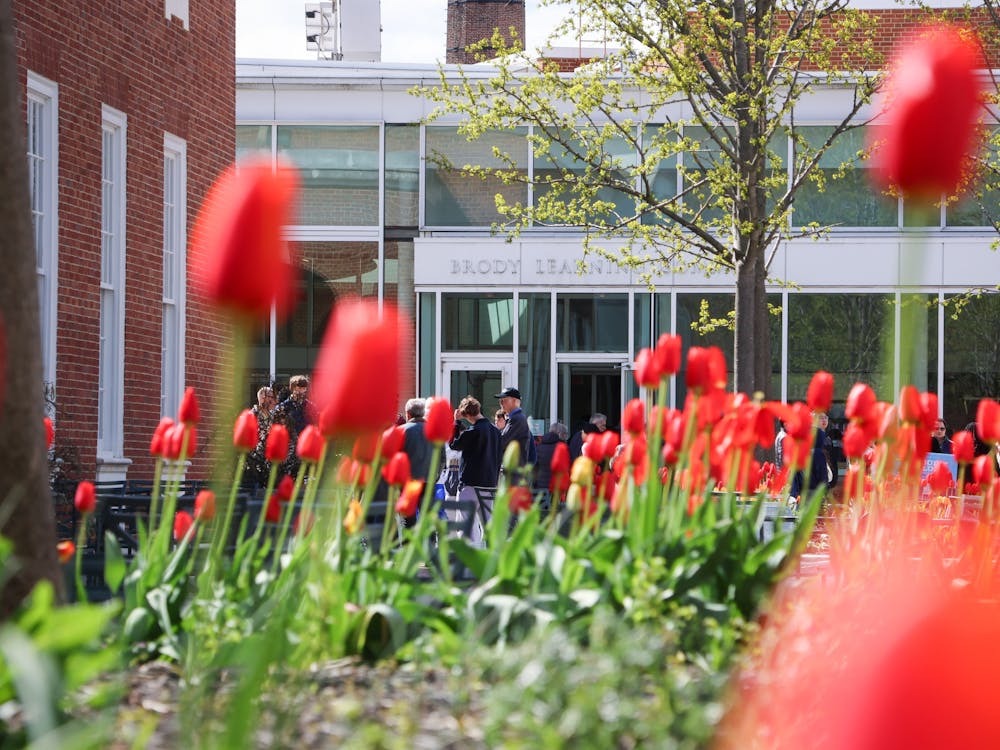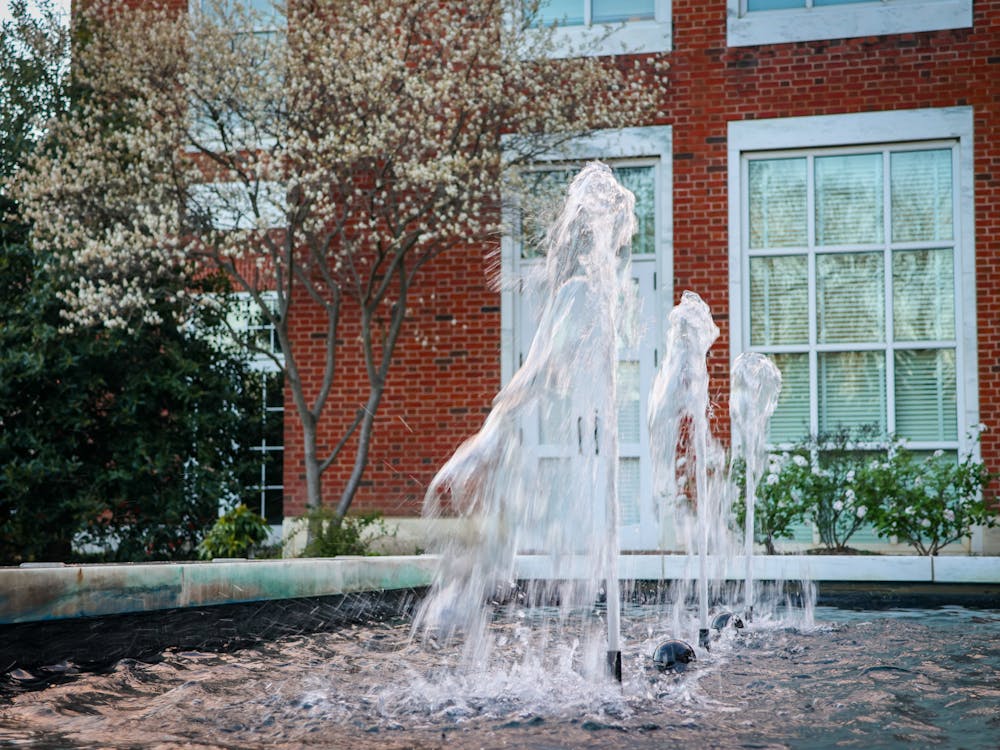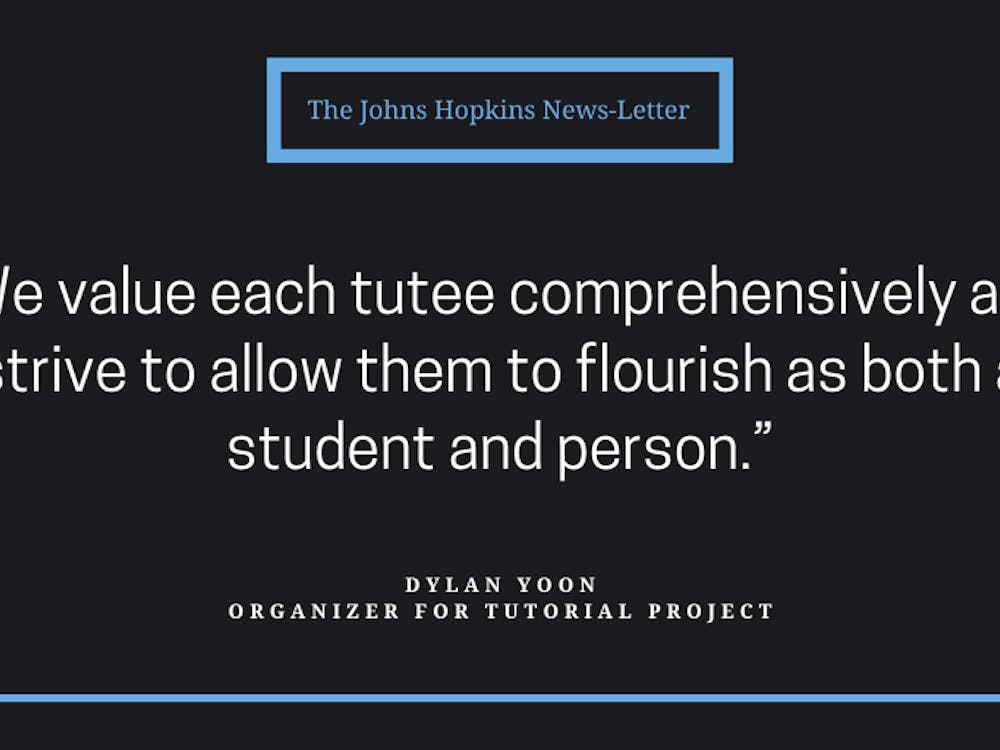In honor of the one year anniversary of Freddie Gray’s death and the Baltimore uprising, the Johns Hopkins Men of Color Hopkins Alliance (MOCHA) and Female Leaders of Color (FLOC) hosted their inaugural “Looking Ahead” conference on Saturday, April 23 in Charles Commons.
The conference addressed youth activism and specifically focused on social justice issues facing the black and Latino communities in Baltimore. Throughout the conference, the Latino community was often referred to as the LatinX community, adopting the gender non-specific word.
Johns Hopkins University trustee Paula Boggs prefaced the conference by highlighting the important role Hopkins can play in the Baltimore community.
“I think what is happening today at Johns Hopkins can serve as a model for university communities throughout our nation,” she said. “Johns Hopkins is at a crossroads in its history as an anchor institution in the City of Baltimore. There is renewed passion and commitment around how Johns Hopkins shows up.”
Felipe Luciano, who is a news reporter, poet, writer, activist and co-founder of the New York Chapter of Young Lords, delivered the keynote address. The Young Lords in New York began as an off-shoot of the national Puerto Rican civil rights organization.
In his remarks, Luciano emphasized the need for coalition building and understanding between the black and Latino communities. He also emphasized the role students have played in helping create national movements on social justice.
“I ask you to begin to move this nation,” Luciano said. “All revolutions — all movements — have started with student movements. The Civil Rights movement started with students. We changed the Democratic Convention with students. The Panthers and Young Lords all came out of students. The worst thing in the world is to have a student movement with people who are foolish and who aren’t reading. You’ve got to be educated.”
Following the morning keynote address, students had the opportunity to attend social justice workshops such as Black and LatinX, led by Towson University Assistant Vice President of Student Affairs for Diversity. Hopkins Associate Professor of Sociology Katrina Bell McDonald, Senior Director of Development at the NAACP Legal Defense and Educational Fund Samantha E. Erskine and CEO of Dew More Baltimore Kenneth Morrison each led social justice workshops.
Morrison’s organization uses social justice based art to foster community engagement in Baltimore. He also is a professor of spoken word at the Maryland Institute College of Art and the Director of Programs for the Gay and Lesbian Community Center of Baltimore. His workshop taught students how they can be successful activists through their actions. He emphasized that not all individuals need to be leaders of movements and encouraged students to occupy supporting roles, which in certain situations are more appropriate.
Students were able to further explore the relationship between art and activism during the Power Hour workshops. Rapper J. Pinder and visual artist Jerome Chester joined Morrison and Luciano to demonstrate the significance of social justice topics in their art by sharing their spoken word and poetry.
Ericka Alston, Director of Youth Services, Violence Prevention, and Community Outreach at Maryland Community Health Initiatives, Inc. (Penn-North) and the Founder of Penn-North Kids Safe Zone, was the afternoon keynote speaker. The Kids Safe Zone is located in the West Baltimore neighborhood, Sandtown-Winchester, where Freddie Gray was arrested. It gives children ages five to seventeen a space to play and participate in engaging extracurricular activities.
Alston described her own struggles while growing up in Baltimore, such as having a child at fifteen, being unable to pursue her passion in college, and dealing with substance abuse. She explained that she decided to open the Kids Safe Zone after the Baltimore Uprising.
“You don’t have to wait for the perfect space, the perfect time, the perfect funding, the perfect check writer, you’ve got to wait for the perfect you, and we will never be perfect. You’ve got to do it now,” Alston said. “No more planning. No more thinking about it. The call to action for student activism is: Students, get active in something that is not self-seeking. Students, get active in something that allows you to give somebody something that you have. Because if you don’t, they might never get it.”
President of MOCHA Chidera Ogbodo, a junior, remarked on the current state of student activism.
“Activism as it is now isn’t perfect. As Mr. Luciano said, we have to be able to listen to all sides and branch out. He said that blacks have to be able to identify with Puerto Ricans and make family our driving foundation for what we do in life,” Ogdobo said.
Vice President of MOCHA Andres Hernandez, also a junior, hoped that students learned the importance of taking action and becoming engaged in the community.
“The big takeaway from this [event] is that activism is not just planning or talking, it’s doing something,” Hernandez said.
Freshman Kate McEvilly, a new member of the Office of Multicultural Affair’s Mentoring Assistance Peer Program (MAPP) and Students Educating and Empowering for Diversity (SEED), enjoyed the conference’s call to action for students.
“I walked away with many different perspectives on how to take action on important social justice issues facing our generation as a student... The message was clear: there is not time to waste,” McEvilly wrote in an email to The News-Letter.
Freshman Mikaela Inadomi, also a member of SEED, left the conference feeling inspired.
“I really liked how the conference naturally motivated the attendees to think about and even act upon social justice issues in Baltimore,” she wrote in an email to The News-Letter. “The speakers had incredible stories that allowed everyone to think beyond themselves.”
Inadomi added that while she understood that the focus of the conference was targeting issues affecting the black and Latino communities, she felt slightly out of place due to her ethnicity.
“I felt as though the conference was sometimes targeted towards the African-American and LatinX communities and left out the roles and perspectives of other races,” she wrote. “I understand that those two minority groups on campus deserve much more attention than they currently receive in terms of talking about race and ethnicity; however, being half Asian and half white, I felt a little misplaced at times.”
Inadomi also spoke about her experience as one of the few Asian Americans at the conference.
“At certain moments I felt the need to validate my place at the conference, or [I felt] singled out and expected to have more information about my heritage,” Inadomi wrote. “Nonetheless, I appreciated the excitement and positive encouragement surrounding the idea of getting in touch with one’s heritage — it made the attendees feel proud of who they are.”






















Please note All comments are eligible for publication in The News-Letter.